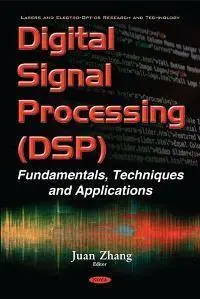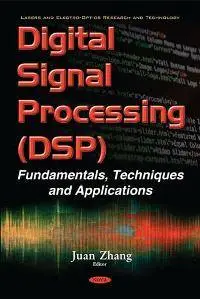Digital Signal Processing (DSP) : Fundamentals, Techniques and Applications
by Juan Zhang
English | 2016 | ISBN: 1634851684 | 198 Pages | PDF | 7.28 MB
by Juan Zhang
English | 2016 | ISBN: 1634851684 | 198 Pages | PDF | 7.28 MB
Digital signal processing (DSP) is the numerical manipulation (including measuring, filtering, producing or compressing) of signals.
The theoretical basis of DSP is the use of discrete domain signals (such as time, frequency and so on), which can be easily modeled, analyzed and processed digitally. So DSP algorithms have long been run on standard computers (such as with MATLAB), as well as on specialized processors such as field-programmable gate arrays (FPGAs).
Rapid and massive advances in DSP technology have been achieved over the past several decades. DSP technology revolutionized the electronics and even opto-electronic industries. The main applications of it include audio and speech signal processing, image processing, spectral signal processing, biomedical signal processing, seismic data processing, and so on. Optical communication plays a significant and increasing role in our society. Use of well-developed DSP techniques and algorithms to design the wavelength division multiplexing (WDM) devices is a wise use of existing technology. The interdisciplinary cooperation between DSP and optics will be crucial for the next-generation optical communications and integrated photonics.
This book covers a wide range of elementary and advanced topics in DSP, focusing on such areas as filter design algorithms, hardware/software techniques, and their applications. Subjects dealt with include the generalized distribution function, Mittag-Leffler expansion, active contour models, theory and design of the average filter, regularized bandpass filter and digital tracking filter, description and design of photonic bandgap structure and optical filters, implementation of low-pass, high-pass and band-pass filters using FPGAs. The last chapter introduces the DSP theory and hardware for obscured object identification, and its applications in the intelligent baggage scanners.



